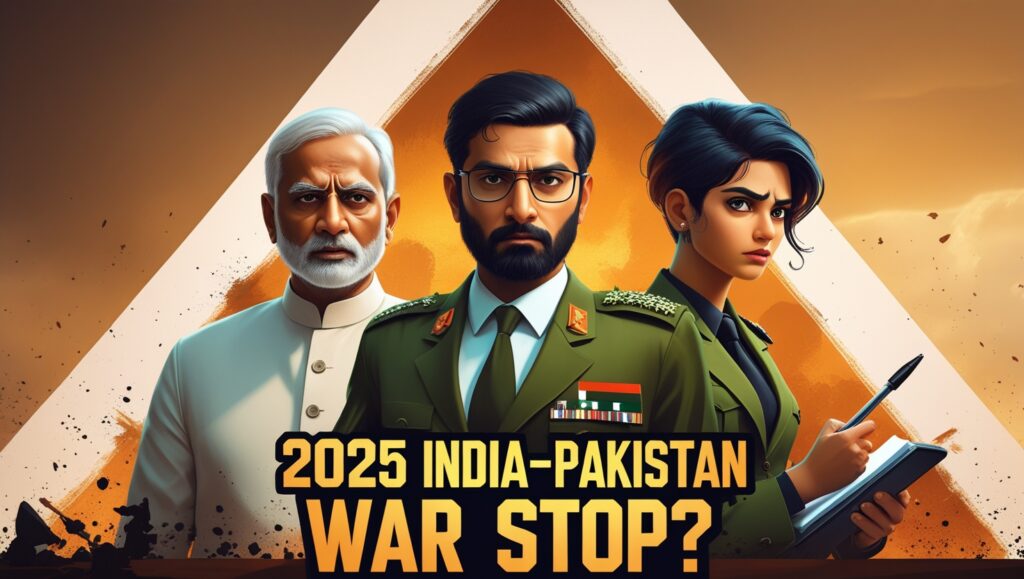
Tensions between India and Pakistan in 2025 escalated into military conflict after a deadly terrorist attack. However, just a few days into the conflict, both nations agreed to a ceasefire. Why did this sudden halt happen despite rising aggression? Let’s explore the full background, strategic moves, and reasons behind the cessation of the 2025 war.
🧨 Beginning of the Conflict: Pahalgam Attack
On April 22, 2025, a brutal terrorist attack took place in Pahalgam, Jammu & Kashmir, killing 26 tourists. The attack was claimed by The Resistance Front (TRF)—a proxy group believed to be linked to the Pakistan-based Lashkar-e-Taiba.
India directly blamed Pakistan for supporting terrorism, which Pakistan strongly denied.
⚔️ Military Response: Operation Sindoor
On May 7, 2025, India launched “Operation Sindoor”, targeting militant camps in Pakistan-administered Kashmir and parts of Punjab province.
India used advanced fighter jets like Rafale and missiles such as SCALP and HAMMER. The operation aimed to neutralize key camps of Jaish-e-Mohammed and Lashkar-e-Taiba, reportedly killing several militants.
🌍 International Pressure and Ceasefire Agreement
On May 8, 2025, under strong international mediation—especially from U.S. President Donald Trump, Secretary of State Marco Rubio, and Vice President J.D. Vance—both countries agreed to an immediate ceasefire.
The United Nations, European Union, and global powers like Russia and China also called for de-escalation.
💧 Suspension of the Indus Water Treaty
India suspended the Indus Waters Treaty on April 23, 2025, cutting off water flow into Pakistan.
This action led to a 90% reduction in water supply in Pakistan’s Punjab region. Pakistan termed it as “an act of war” and even threatened nuclear retaliation.
🤝 Key Reasons Behind the Ceasefire
1. International Pressure
Global powers, especially the U.S., pushed both nations to avoid a full-scale war due to the threat of nuclear escalation.
2. Nuclear War Risk
Since both India and Pakistan are nuclear-armed, any further military escalation could have had catastrophic consequences.
3. Economic Consequences
War disrupted economies on both sides—trade, tourism, and investments took a major hit.
4. Political and Domestic Pressure
Both countries ‘ internal pressure from citizens, opposition parties, and civil society forced governments to pursue diplomacy.
📌 Conclusion
The 2025 India-Pakistan conflict highlights how international diplomacy, nuclear deterrence, economic realities, and political calculation all played key roles in halting the war.
Despite the initial aggression, strategic restraint and global mediation helped avert a much larger disaster.
Would you like me to create a downloadable PDF or Word version of this article as well?






